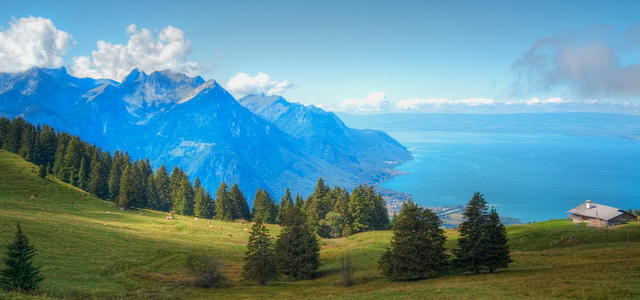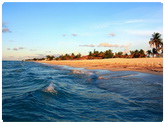| Quick Facts: | Lake Geneva |
|---|---|
| Countries: | Switzerland France |
| Alternative names: | Lake Leman Lac Léman (fr) |
| Catchment area: | 7.975 km² (3.079 sq mi) |
| Max. length: | 73 km (45 mi) |
| Max width: | 14 km (8.7 mi) |
| Surface area: | 580.03 km² (223.95 mi²) |
| Avg. Depth: | 154.4 m (507 ft) |
| Max. depth: | 310 m (1.017 ft) |
| Water volume: | 89 km³ |
| Primary inflows: | Rhone Dranse |
| Primary outflows: | Rhone River |
Lake Geneva is a crescent-shaped lake principally within Switzerland but bordering France along part of its southern shore. About 60% of its surface is under Swiss sovereignty, the rest under French. Lake Leman, its alternate name, comes from the French Lac Léman, which is derived from the Latin name Lacus Lemannus.
The lake is noted for its deep blue color and for the beauty of the surrounding mountains, particularly Mont Blanc. The city of Geneva lies at its outlet, and Lausanne, Vevey, and Montreux are on its northern shore. Toward its eastern end the castle of Chillon rises directly from the waters.
The lake represents a widening of the Rhône River, which enters it at the eastern end and leaves at the southwestern. It receives no significant amount of water from any other source.At the lower end a rock bar divides it into the Petit Lac and the Grand Lac.
The lake, with an area of about 225 square miles (580 sq km), is about 1,230 feet (375 meters) above sea level. It is 45 miles (72 km) long, and its greatest breadth is about 8.5 miles (13 km). The lake is exceptionally deep, reaching a maximum depth of 1,017 feet (310 meters). Pulsations, or tides, called “seiches” cause rapid variations in the water level.





